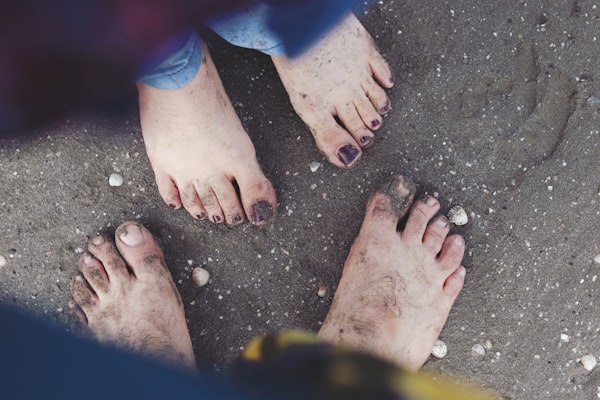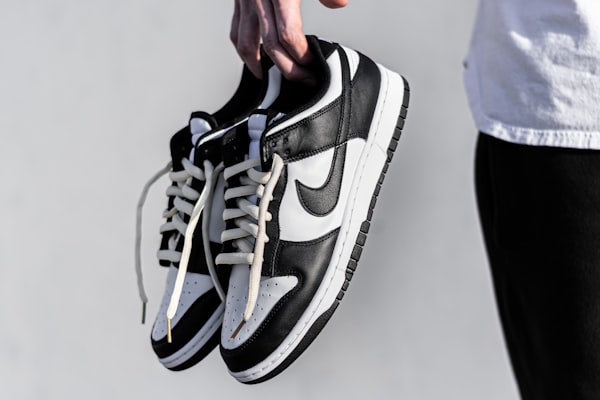Hey, there, fellow foot soldiers! Do you ever feel like your heels are more Achilles' curse than Achilles' heel? If you're experiencing pain, swelling, or stiffness in the back of your foot, you might suffer from Achilles Tendonitis.
But don't worry. We're here to give you the lowdown on everything you need to know about this pesky condition. From what it is and what causes it to how to diagnose and treat it, we've got you covered.
Whether you're a hardcore athlete or a weekend warrior, Achilles Tendonitis can put a severe cramp in your style. But by understanding the ins and outs of the condition, you'll be better equipped to prevent it from happening in the first place and to manage it if it does.
So, kick up your feet, and let's dive into the world of Achilles Tendonitis!
Anatomy of The Achilles Tendon
The Achilles tendon is essential to the human body's musculoskeletal system. Its structure is designed to provide optimal support and strength to the foot and ankle.
The Achilles tendon is named after the Greek hero Achilles, who was said to have been invulnerable except for his heel. According to legend, Achilles was shot in the heel with an arrow, leading to his downfall in the Trojan War. Hence, the term "Achilles heel" has come to refer to a person's weakness or vulnerable spot.
The tendon is composed of bundles of collagen fibers that are wrapped in a sheath of connective tissue. This structure enables the tendon to withstand significant force, making it strong and flexible. The Achilles tendon originates from two muscles in the calf, the gastrocnemius and the soleus. These muscles merge to form the tendon, which then attaches to the back of the heel bone.
During foot and ankle movement activities, the calf muscles contract, pulling on the Achilles tendon. This causes the tendon to stretch and transmit the force to the heel bone, resulting in foot and ankle movement. The Achilles tendon allows the foot to push off the ground during walking, running, and jumping.

The strength and durability of the Achilles tendon allow individuals to perform various activities, from essential day-to-day functions to more demanding physical activities. However, this also means the tendon can be susceptible to injury and overuse. Therefore, taking care of the Achilles tendon and avoiding activities that strain it excessively to prevent Achilles Tendonitis or other related injuries is crucial.
What Causes Achilles Tendonitis?
Achilles Tendonitis is a condition caused by the Achilles tendon's inflammation, resulting in pain, stiffness, and swelling in the back of the foot and ankle. Several factors can contribute to the development of Achilles Tendonitis.
1. Overuse
Overuse is one of the most common causes of Achilles Tendonitis. Activities involving repetitive foot and ankle motions, such as running, jumping, or dancing, can strain the Achilles tendon excessively, causing it to become inflamed. This is often seen in athletes who engage in these activities frequently and with high intensity.
2. Sudden Injury
A sudden injury, such as a fall or a direct blow to the Achilles tendon, can also lead to the development of Achilles Tendonitis. This type of injury can cause immediate inflammation and swelling of the tendon and surrounding tissues, which can be extremely painful.
3. Certain Medical Conditions
Certain medical conditions can also increase the risk of developing Achilles Tendonitis. These include conditions that affect how the body processes and absorbs nutrients, such as Rheumatoid Arthritis or Gout. In addition, people with flat feet or high arches may be more prone to developing the condition due to the altered biomechanics of their feet.
Examples of activities that can lead to the development of Achilles Tendonitis include: running or jogging on hard surfaces, sudden increases in physical activity, jumping or landing from high places, and running up and down hills or stairs. These activities can put a lot of stress on the Achilles tendon, causing it to become inflamed over time.
It's essential to take measures to prevent the development of Achilles Tendonitis by engaging in activities that are less likely to cause stress on the tendon. Three important measures are stretching, warming up before physical activity, and wearing appropriate footwear with good support.
What Are the Symptoms of Achilles Tendonitis?
Achilles Tendonitis can cause various symptoms that can vary in severity and affect the everyday activities of individuals who experience them. Some of the most common symptoms of Achilles Tendonitis include:
1. Pain
Pain in the back of the heel and ankle is one of the most common symptoms of Achilles Tendonitis. The pain may be mild at first but can gradually increase in intensity and become more severe, particularly during physical activity or prolonged periods of standing or walking.
2. Stiffness
The Achilles tendon may feel stiff and tight, particularly in the morning or after prolonged periods of inactivity.
3. Swelling
Inflammation of the Achilles tendon can cause swelling in the area around the back of the heel and ankle, which may also feel warm and tender to the touch.
4. Weakness
The affected leg may feel weak, making it difficult to perform certain activities, such as jumping or running.
These symptoms can make everyday activities, such as walking, running, and even standing, challenging and painful. For example, people with Achilles Tendonitis may find it difficult to climb stairs, stand for long periods, or participate in physical activities that they once enjoyed. In severe cases, the pain and stiffness may even limit their ability to perform routine tasks or affect their overall quality of life.
How Is Achilles Tendonitis Diagnosed?
Diagnosing Achilles Tendonitis typically involves a combination of physical examination, imaging tests, and medical history review. Here's a breakdown of how Achilles Tendonitis is diagnosed:
1. Physical Exam
A doctor will first conduct a physical examination of the affected leg to assess the severity of the symptoms and look for any visible signs of inflammation, such as swelling or redness. They may also check the range of motion in the ankle and foot and test the strength of the leg muscles.
2. Medical History Review
The doctor will review the patient's medical history and ask questions about the onset of the symptoms. This includes questions about previous injuries or underlying medical conditions that could contribute to the development of Achilles Tendonitis.
3. Imaging Tests
In some cases, imaging tests such as X-rays or an MRI may be used to confirm the diagnosis and rule out other conditions that could be causing the symptoms. These tests can help identify any structural abnormalities in the tendon, such as tears or ruptures, or determine the extent of inflammation in the area.
Achilles Tendonitis can be diagnosed relatively easily in most cases. Still, seeking medical advice is essential if you experience any symptoms or pain in the back of the heel and ankle. Prompt diagnosis and treatment can help prevent the condition from worsening and help you resume your normal activities as quickly as possible.
What Are the Treatment Options for Achilles Tendonitis?
Treatment for Achilles Tendonitis can vary depending on the severity of the condition and the individual needs of the patient. Generally, treatment options for Achilles Tendonitis can be divided into non-surgical and surgical options.
Non-Surgical Options
- Rest: Rest is an essential component of treating Achilles Tendonitis. Reducing or avoiding activities that exacerbate the condition can help alleviate pain and prevent further damage to the tendon.
- Ice: Applying ice to the affected area can help reduce inflammation and pain. Ice can be applied for 15-20 minutes several times a day.
- Physical Therapy: Physical therapy can help stretch and strengthen the Achilles tendon and surrounding muscles. A physical therapist can develop an individualized exercise program for the patient, including stretching, range-of-motion exercises, and strength training.
- Massage and Acupuncture: Massage and acupuncture can help reduce pain and tension in the muscles and tendons.
- Medications: Nonsteroidal anti-inflammatory drugs (NSAIDs), such as ibuprofen or naproxen, can help reduce pain and inflammation. These medications are available over-the-counter or with a prescription.
- Orthotics: Custom-made orthotics can help improve foot mechanics and reduce pressure on the Achilles tendon.

Surgical Options
- Percutaneous Ultrasonic Tenotomy: This minimally invasive surgical procedure uses ultrasound technology to break up damaged tissue in the tendon, allowing for faster healing.
- Open Tendon Repair: In severe cases of Achilles Tendonitis, an open tendon repair may be necessary. This involves an incision in the back of the leg to access the damaged tendon and repair it using sutures.
- Tendon Transfer: In cases where the Achilles tendon is severely damaged and cannot be repaired, a tendon transfer may be necessary. This involves taking a healthy tendon from another part of the body and using it to replace the damaged Achilles tendon.
Overall, the treatment approach for Achilles Tendonitis will depend on the severity of the condition and the patient's individual needs. Non-surgical treatment options are typically tried first. While surgery may be recommended for more severe cases or if non-surgical treatments have been unsuccessful.
Living with Achilles Tendonitis
Living with Achilles Tendonitis can be challenging, but several strategies can help alleviate symptoms and improve the overall quality of life. Here are some practical tips for living with Achilles Tendonitis:
1. Modify Activities
Avoid or modify activities that strain the Achilles tendon excessively, such as running or jumping. Low-impact exercises, such as swimming or cycling, can be beneficial for maintaining physical fitness while minimizing strain on the tendon.
2. Wear Supportive Footwear
Choose footwear with good arch support and cushioning to help reduce pressure on the Achilles tendon. Avoid high heels or shoes with minimal support.


3. Stretch and Strengthen
Incorporate stretching exercises into your daily routine to help improve flexibility and range of motion in the Achilles tendon and surrounding muscles. In addition, strengthening exercises, such as calf raises, can help improve the strength of the tendon and reduce the risk of further injury.
4. Apply Ice
Apply ice to the affected area for 15-20 minutes several times daily. This can help reduce inflammation and alleviate pain.
5. Seek Medical Advice
If you experience persistent or severe pain, swelling, or stiffness, seek medical advice. A healthcare provider can recommend the best treatment options and develop an individualized care plan for your needs.
6. Maintain a Healthy Lifestyle
Maintaining a healthy lifestyle, including a balanced diet and regular exercise, can help improve overall health and reduce the risk of developing conditions that can exacerbate Achilles Tendonitis.
Living with Achilles Tendonitis can be challenging. But taking care of yourself and modifying your activities can help alleviate symptoms and improve your overall quality of life. With proper care and management, many people with Achilles Tendonitis can recover fully and return to normal activities.
Tips from Our Editors
- Gradual increase in physical activity: Avoid sudden increases in physical activity, particularly activities that strain the Achilles tendon excessively. Gradually increase your activity level over time to allow your body to adjust.
- Proper footwear: Wear appropriate footwear with good arch support and cushioning to help reduce pressure on the Achilles tendon. Avoid high heels or shoes with minimal support.
- Stretching and warm-up: Stretch and warm up before engaging in physical activity to help prepare your muscles and tendons for the strain.
- Cross-training: Incorporate cross-training activities, such as swimming or cycling, into your routine to reduce strain on the Achilles tendon.
On a Final Note
Well, that's all she wrote, folks! We hope this article has helped shed some light on the murky world of Achilles Tendonitis.
Remember, if you ever feel like your heels are more curse than charm, don't hesitate to seek medical attention.
And, as always, keep on soldiering through life like the badass Achilles you are! Just, you know, maybe take it easy on the tendons occasionally.
Related Articles










